Comprehensive Guide to Tree Lopping and Removal in Hayes
Understanding Tree Lopping and Removal
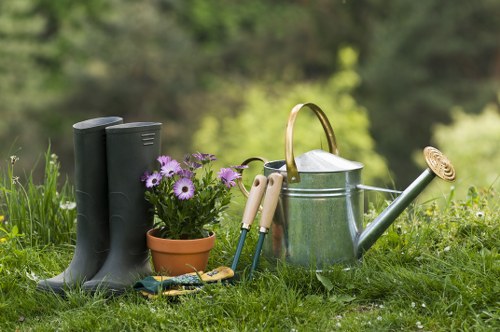
Tree lopping and removal are essential services for maintaining the health and safety of your property in Hayes. Whether you have an overgrown tree threatening your home or need to clear space for new construction, professional tree services are crucial.
Tree lopping involves selectively cutting branches to manage the tree's shape and health. This process can prevent potential hazards such as falling branches during storms. On the other hand, tree removal is the complete elimination of a tree, often necessary when a tree is diseased, dead, or poses a safety risk.
Hiring certified arborists ensures that the job is done efficiently and safely. They have the expertise to assess the tree's condition and determine the best course of action.
When to Consider Tree Lopping and Removal

Deciding between lopping and removal depends on several factors. Here are common scenarios where each service might be necessary:
- Dead or Diseased Trees: If a tree is dying or has significant disease, removal is often the safest option.
- Overgrown Branches: Lopping can help control the size and spread of branches, reducing the risk of damage.
- Storm Damage: Trees damaged by storms may need to be removed to prevent future hazards.
- Property Development: Clearing space for new buildings or landscaping projects typically requires tree removal.
- Safety Concerns: Trees too close to power lines or structures may need to be lopped or removed to ensure safety.
Assessing the specific needs of your property will help determine the appropriate action.
It's important to act promptly when signs of tree distress appear to avoid more extensive and costly procedures later.
Benefits of Professional Tree Services
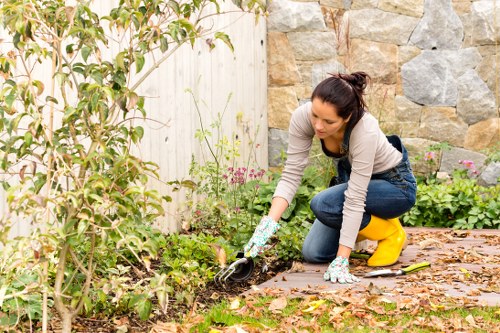
Choosing professional tree lopping and removal services in Hayes offers numerous advantages:
- Safety: Professionals have the necessary training and equipment to handle trees safely, minimizing risks to property and individuals.
- Efficiency: Experienced arborists can complete the job more quickly and effectively than DIY methods.
- Health Assessment: Experts can identify underlying issues with your trees, offering solutions to promote their longevity.
- Property Value: Well-maintained trees enhance the aesthetic appeal and value of your property.
- Environmental Benefits: Proper tree care supports local ecosystems and contributes to environmental sustainability.
Investing in professional services ensures that your trees are managed responsibly and effectively.
Moreover, professionals adhere to local regulations, ensuring that all necessary permits and guidelines are followed.
Choosing the Right Tree Service in Hayes
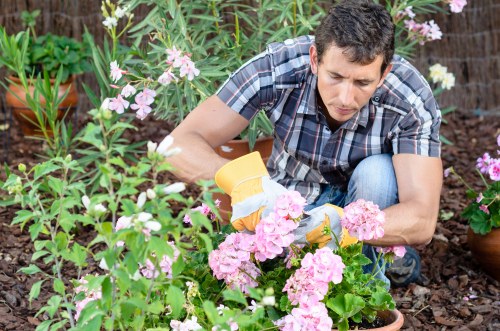
Selecting a reputable tree service in Hayes involves considering several key factors:
- Experience and Expertise: Look for companies with a proven track record and certified arborists on staff.
- **Insurance and Licensing:** Ensure the service provider is fully insured and licensed to protect against potential liabilities.
- Customer Reviews: Positive testimonials and reviews indicate reliable and quality service.
- Comprehensive Services: Choose a company that offers a wide range of services, from trimming and pruning to full-scale removal.
- Transparent Pricing: Clear and upfront pricing helps avoid unexpected costs.
Conducting thorough research and obtaining multiple quotes can help you make an informed decision.
Additionally, seeking recommendations from neighbors or local community groups can lead you to trusted service providers.
The Tree Removal Process

Understanding the tree removal process can help you prepare and ensure a smooth experience:
- Assessment: An arborist examines the tree's condition and assesses any potential hazards.
- Planning: A detailed plan is created, outlining the steps and safety measures required.
- Execution: The tree is carefully cut down using specialized equipment, ensuring minimal disruption to your property.
- Cleanup: Debris is removed, and the area is cleared, leaving your property clean and safe.
- Post-Removal: The site may be treated for pests or disease, and recommendations for future tree care can be provided.
Each step is crucial for ensuring that tree removal is conducted safely and effectively.
Proper planning and execution by professionals prevent damage to surrounding structures and maintain the integrity of your landscape.
Cost Factors for Tree Lopping and Removal

The cost of tree lopping and removal in Hayes depends on several factors:
- Size and Height: Larger and taller trees require more resources and time, increasing the cost.
- Location: Trees in hard-to-reach areas or close to buildings may require additional safety measures, affecting the price.
- Tree Health: Diseased or damaged trees may need specialized treatment, influencing the overall cost.
- Accessibility: Limited access can make the job more complex and expensive.
- Permit Fees: Some tree removals require permits, which can add to the cost.
Obtaining multiple quotes from reputable services can help you find a competitive price.
Additionally, investing in quality service can prevent future expenses related to property damage or hazardous conditions.
Environmental Considerations
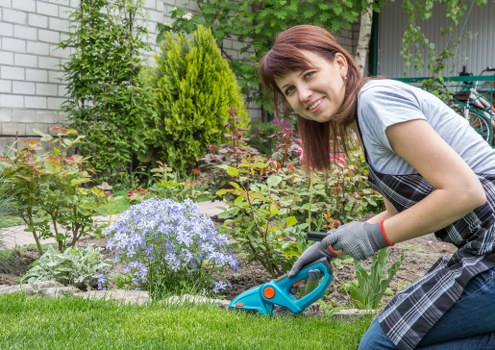
Tree lopping and removal have environmental implications that should be carefully considered:
- Ecological Impact: Trees play a vital role in supporting local wildlife and maintaining ecological balance. It's important to consider the impact of removing a tree on the surrounding environment.
- Sustainable Practices: Choose services that practice sustainable tree management, such as recycling wood and minimizing waste.
- Replanting: After removal, consider planting new trees to replace those lost, supporting biodiversity and environmental health.
- Soil Preservation: Proper removal techniques prevent soil erosion and maintain soil integrity.
- Carbon Footprint: Trees absorb carbon dioxide, so their removal affects your carbon footprint. Balancing tree removal with replanting can mitigate this impact.
Being mindful of these factors ensures that tree management contributes positively to the environment.
Implementing eco-friendly practices in tree lopping and removal supports sustainability and community well-being.
Safety Measures in Tree Lopping and Removal
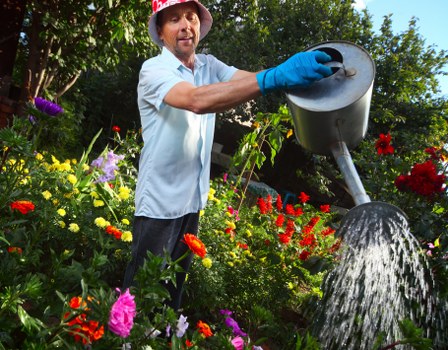
Safety is paramount during tree lopping and removal. Professional services adhere to strict safety protocols to prevent accidents:
- Proper Equipment: Using the right tools and protective gear reduces the risk of injuries.
- Trained Personnel: Certified arborists are trained in safe tree handling and removal techniques.
- Site Assessment: Evaluating the area for potential hazards ensures a secure environment.
- Stabilization Techniques: Methods like bracing and rigging control the tree's descent, preventing property damage.
- Emergency Plans: Having contingency plans in place addresses unexpected challenges effectively.
Adhering to these measures guarantees that tree work is conducted safely and responsibly.
Additionally, ongoing training and certification ensure that arborists stay updated on best practices and safety standards.
Maintaining Tree Health Post-Lopping
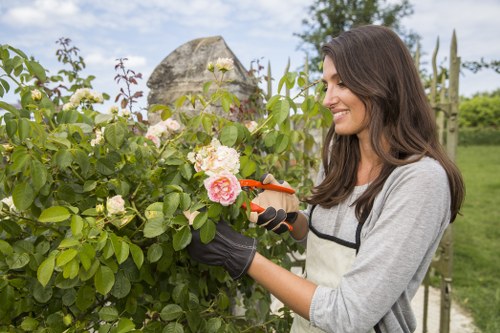
After tree lopping, maintaining the health of your trees is essential:
- Regular Inspections: Schedule periodic check-ups to monitor the tree's condition and address any emerging issues.
- Proper Pruning: Continue to trim branches to promote healthy growth and prevent overcrowding.
- Nutrient Management: Ensure your trees receive adequate nutrients through appropriate fertilization.
- Watering: Maintain consistent watering schedules, especially during dry periods, to support tree health.
- Pest Control: Monitor for pests and diseases, treating them promptly to prevent damage.
Ongoing care enhances the longevity and vitality of your trees.
Engaging with professional tree services for routine maintenance can help you keep your trees in optimal condition.
Legal Considerations in Tree Removal

Tree removal in Hayes is subject to local laws and regulations. It's important to be aware of the legal aspects before proceeding:
- Permits: Certain tree removals require permits, especially if the tree is protected or on a designated conservation area.
- Property Boundaries: Ensure that the removal does not infringe on neighboring properties or public lands.
- Zoning Laws: Local zoning laws may dictate the number and types of trees allowed on your property.
- Protected Species: Some trees are protected due to their age, species, or ecological importance, and removing them may require special permission.
- Liability: Understanding your liability in case of accidental damage during removal is crucial.
Consulting with local authorities or a professional tree service can help you navigate these regulations.
Adhering to legal requirements ensures that tree removal is conducted ethically and responsibly.
Innovative Techniques in Tree Lopping
[IMG_11]Advancements in tree lopping have introduced innovative techniques that enhance efficiency and safety:
- Climbing Techniques: Modern climbing gear allows arborists to maneuver safely through trees, accessing difficult areas with ease.
- Mechanical Loppers: Powered tools reduce the physical strain on workers and increase the speed of lopping tasks.
- Remote Controlled Equipment: Machinery that can be operated from a distance minimizes risk to personnel and nearby structures.
- Biotechnical Methods: These methods combine pruning with biological techniques to improve tree health and structure.
- Aerial Lifting: Crane-assisted removal allows for the safe and efficient handling of large branches and trees.
Utilizing these techniques ensures that tree lopping is performed with precision and minimal impact.
Staying updated with the latest technologies enables arborists to provide superior service to their clients.
Seasonal Considerations for Tree Services
[IMG_12]Timing plays a crucial role in tree lopping and removal. Different seasons offer unique advantages for various services:
- Spring: Ideal for removing diseased or dead branches, allowing trees to recover and grow healthier.
- Summer: Suitable for routine maintenance and shaping, as trees are actively growing.
- Autumn: Best for removal of large trees before winter weather sets in.
- Winter: Dormant trees are easier to remove with less sap and foliage, reducing the risk of disease transmission.
- Rainy Season: Avoid major tree work during heavy rains to prevent safety hazards and equipment damage.
Planning tree services around the seasons ensures optimal results and minimizes risks.
Consulting with professionals can help you determine the best time for your specific needs.
Environmental Sustainability in Tree Removal
[IMG_13]Embracing sustainability in tree removal practices benefits both your property and the environment:
- Recycling Wood: Reclaimed wood from removed trees can be repurposed for furniture, mulch, or landscaping.
- Minimizing Waste: Efficient removal techniques reduce leftover debris and promote environmental responsibility.
- Supporting Local Ecosystems: Removing invasive species and planting native trees supports local biodiversity.
- Energy-Efficient Practices: Utilizing energy-efficient equipment lowers the carbon footprint of tree services.
- Community Engagement: Participating in local tree-planting initiatives foster a collaborative approach to environmental stewardship.
Implementing sustainable practices ensures that tree removal contributes positively to the community and environment.
Choosing eco-friendly tree services aligns your property management with broader environmental goals.
Post-Removal Landscaping and Restoration
[IMG_14]After tree removal, restoring your landscape enhances the overall aesthetics and functionality of your property:
- Soil Health: Remediation ensures that the soil remains fertile and free from pests or diseases.
- Planting New Trees: Selecting the right species promotes a healthy and balanced ecosystem.
- Landscaping Design: Professional design services can help integrate the cleared area seamlessly into your existing landscape.
- Water Management: Installing proper drainage systems prevents waterlogging and supports plant health.
- Hardscaping Elements: Features like pathways, patios, and garden beds add structure and functionality to your outdoor space.
Thoughtful restoration creates a harmonious and inviting environment after tree removal.
Collaborating with landscaping experts ensures that your property continues to thrive post-removal.
Emergency Tree Services in Hayes
[IMG_15]Unexpected events like storms or accidents can create urgent tree-related issues. Emergency tree services provide timely solutions:
- 24/7 Availability: Emergency services are available round the clock to address urgent tree problems.
- Rapid Response: Quick arrival and action prevent further damage and ensure safety.
- Comprehensive Solutions: From hazard assessment to immediate removal, services cover all necessary steps.
- Specialized Equipment: Advanced tools and machinery enable efficient handling of emergency situations.
- Safety First: Prioritizing the safety of your property and its occupants is paramount during emergencies.
Having access to reliable emergency tree services provides peace of mind during unforeseen events.
Establishing a relationship with a trusted provider ensures you are prepared for any tree-related emergencies.
Cost-Saving Tips for Tree Lopping and Removal
[IMG_16]Managing the cost of tree lopping and removal is possible with these practical tips:
- Plan Ahead: Scheduling services during off-peak seasons can lead to lower prices.
- Get Multiple Quotes: Comparing estimates from different providers ensures competitive pricing.
- Bundle Services: Combining tree services with other landscaping tasks can offer cost savings.
- Maintain Regularly: Routine maintenance prevents the need for expensive removal by addressing issues early.
- Opt for Local Services: Local companies may offer better rates and personalized service.
Implementing these strategies helps manage expenses without compromising on quality.
Additionally, investing in preventative care reduces the likelihood of costly emergency removals.
Understanding Tree Health and Disease
[IMG_17]Tree health is a critical aspect of tree lopping and removal. Recognizing signs of disease can inform your decisions:
- Discoloration: Leaves turning yellow or brown may indicate nutrient deficiencies or disease.
- Dead Branches: Shedding limbs can signal internal problems within the tree.
- Cracks and Splits: Visible damage to the trunk can weaken the tree's structure.
- Excessive Leaf Drop: An unusual amount of leaf loss can be a sign of stress or infestation.
- Mushrooms or Fungi: Growths around the base indicate possible rot or decay.
Early detection and treatment can prolong a tree's life and prevent the need for removal.
Professional arborists can accurately diagnose tree health issues and recommend appropriate actions.
The Role of Arborists in Tree Management
[IMG_18]Arborists are essential to tree lopping and removal, offering specialized knowledge and skills:
- Assessment and Diagnosis: Arborists evaluate tree health and structural integrity.
- Pruning and Trimming: They perform precise cuts to improve tree health and appearance.
- Hazard Mitigation: Arborists identify and address potential hazards posed by trees.
- Consultation and Planning: They provide expert advice on tree placement and landscape integration.
- Emergency Response: Arborists handle urgent tree situations with expertise and efficiency.
Their expertise ensures that tree management is conducted effectively and safely.
Engaging a qualified arborist enhances the overall health and aesthetics of your landscape.
Innovative Technologies in Tree Removal
[IMG_19]Modern technologies have revolutionized tree lopping and removal, offering improved precision and safety:
- Drone Surveillance: Drones assess tree health and structure, providing detailed aerial views.
- GPS Mapping: Precise location mapping aids in planning and execution of tree services.
- Advanced Cutting Tools: High-efficiency saws and chains enhance cutting accuracy and speed.
- Safety Harnesses and Gear: Improved protective equipment ensures safer tree handling.
- Environmental Monitoring: Technology tracks the impact of tree services on the surrounding environment.
Integrating these technologies leads to more efficient and environmentally friendly tree services.
Staying abreast of technological advancements allows arborists to offer superior service quality.
Preparing Your Property for Tree Removal
[IMG_20]Proper preparation ensures a smooth tree removal process:
- **Clear the Area:** Remove vehicles, outdoor furniture, and other obstacles near the tree.
- **Inform Neighbors:** Notify nearby residents about the planned work to prevent inconvenience.
- Secure Pets and Children: Ensure that all pets and children are safely indoors during the removal.
- Obtain Necessary Permits: Secure any required permits in advance to avoid delays.
- Plan for Cleanup: Arrange for debris removal and site restoration after the service.
Taking these steps facilitates a hassle-free tree removal experience.
Collaboration with your tree service provider ensures that all preparations meet safety and regulatory standards.
Post-Removal Tree Care Tips
[IMG_21]After tree removal, maintaining the health of your landscape is important:
- Inspect the Area: Check for any remaining debris or potential hazards.
- Soil Treatment: Apply appropriate soil treatments to prevent disease and promote new growth.
- Plant New Trees: Replace removed trees with new saplings to support environmental balance.
- Monitor for Pests: Keep an eye out for any pest activity that could affect your remaining plants.
- Regular Maintenance: Schedule ongoing landscaping care to enhance the vitality of your garden.
These practices ensure that your property remains healthy and attractive post-removal.
Engaging with professional landscapers can help implement effective post-removal care strategies.
The Importance of Tree Preservation
[IMG_22]While tree removal is sometimes necessary, preserving existing trees is equally important:
- Environmental Benefits: Trees provide oxygen, improve air quality, and support wildlife.
- Energy Efficiency: Properly placed trees can reduce energy costs by providing shade and windbreaks.
- Aesthetic Value: Mature trees enhance the visual appeal of your property.
- Property Value: Well-maintained trees increase the market value of your home.
- Community Well-being: Trees contribute to the overall health and happiness of the community.
Balancing tree removal with preservation supports a sustainable and vibrant environment.
Implementing thoughtful tree management practices ensures that your landscape remains balanced and healthy.
FAQs About Tree Lopping and Removal
[IMG_23]Q1: How do I know if a tree needs to be removed or just lopped?
A1: Signs such as dead branches, significant disease, or structural instability typically indicate that removal is necessary. Consulting with a professional arborist can provide a clear assessment.
Q2: Is tree removal expensive?
A2: Costs vary based on factors like tree size, location, and health. Obtaining multiple quotes and understanding the specific needs of your tree can help manage expenses.
Q3: Can I remove a tree without a permit?
A3: It depends on local regulations. In Hayes, some tree removals require permits, especially for protected species or large trees. Always check with local authorities before proceeding.
Q4: What should I do to prepare for a tree removal service?
A4: Clear the area around the tree, inform neighbors, secure pets and children, obtain necessary permits, and plan for cleanup. Proper preparation ensures a smooth removal process.
Q5: How long does the tree removal process take?
A5: The duration depends on the tree's size and complexity. Most removals can be completed within a day, but larger or more complicated jobs may take longer.
Have more questions? Contact us today to speak with our expert team!
Conclusion
Effective tree lopping and removal in Hayes require professional expertise and careful planning. By understanding the process, benefits, and considerations, you can make informed decisions that enhance the safety, health, and beauty of your property.
Whether you need routine maintenance or emergency removal, partnering with a trusted tree service ensures that your trees are managed responsibly and sustainably.
Don't wait until hazards arise—**book your service now** and ensure a healthy landscape for years to come.
Take Action Today
[IMG_24]Managing the trees on your property is crucial for maintaining a safe and beautiful environment. Whether you're dealing with overgrown branches, diseased trees, or need complete removal, professional tree services in Hayes are here to help.
**Contact us today** to schedule a consultation and receive expert advice tailored to your specific needs. Our team of certified arborists is dedicated to providing top-notch service, ensuring that your trees are handled with care and precision.
Don't let tree issues compromise the safety and aesthetics of your property. **Book your service now** and take the first step towards a healthier, more beautiful landscape.
